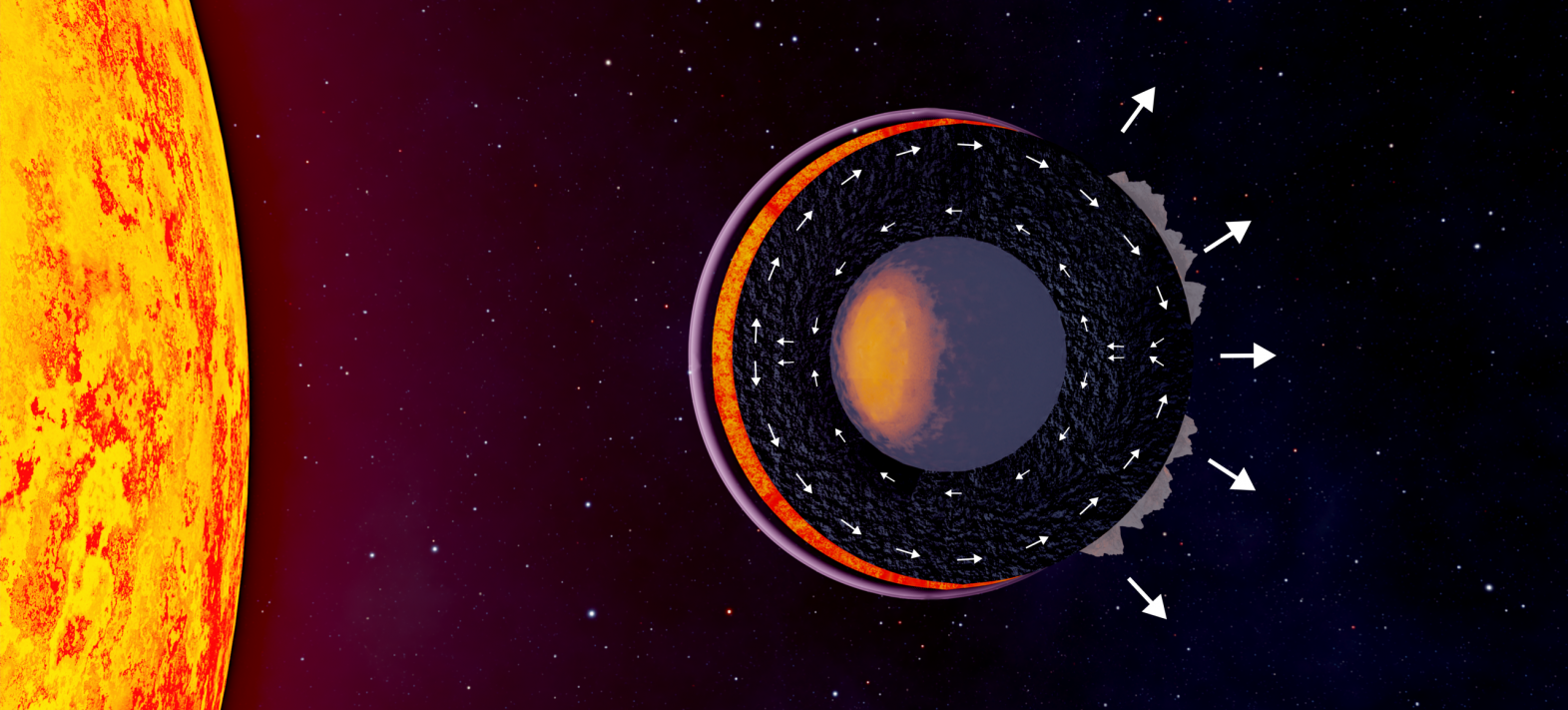Follow us on Google News (click on ☆)

Diagram of the internal structure of a lava planet in a cold state.
© Romain Jean-Jacques
An atmosphere shaped by chemical fractionation
The study highlights the importance of crystallization processes and differentiation between solids and liquids. Thanks to unprecedented numerical simulations, researchers show that these planets evolve according to two main thermal scenarios:
- If the planet's interior is entirely molten, the atmosphere reflects the planet's overall composition, and the night-side surface is unstable and constantly renewed.
- If the interior is mostly solid, with only a shallow lava ocean on the illuminated side, the atmosphere is found to be depleted in certain volatile elements like sodium, potassium, and iron.
As the planet cools, distinct minerals precipitate from the magma and accumulate, changing the composition of the residual lava ocean and, by a knock-on effect, that of the silicate atmosphere. This gradual chemical transformation constitutes a measurable signature from a distance.
Observations to trace back through time
Current observational instruments, notably the James Webb Space Telescope (JWST), are now capable of measuring the temperature of the night side of these planets. This key data allows scientists to infer their internal thermal state and, indirectly, their geological history.
Already, the hypotheses from this article have been selected to be tested with the JWST space telescope, and an international team of astronomers has just secured a slot for 100 hours of observations. Future observations, from the ground or from space, will also allow for a more detailed analysis of their atmospheric composition. This data will offer a unique window into the interactions between atmosphere, magma ocean, and solid mantle.
Towards a new geophysics of exoplanets
This research paves the way for an integrated geophysical approach to studying rocky exoplanets. By combining interior modeling, atmospheric data, and thermal measurements, it becomes possible to reconstruct the evolution of these worlds from their formation to their current state.
Lava planets, long perceived as exotic curiosities, now appear as essential keys for understanding the deep history of terrestrial planets, including our own.